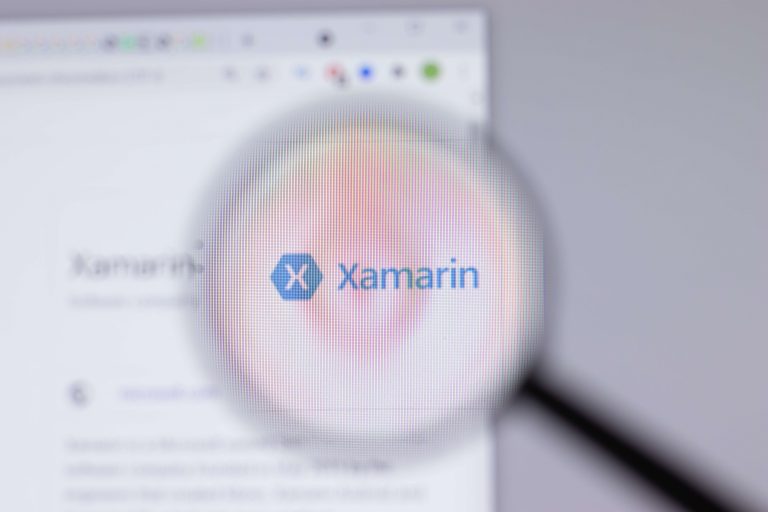Instead of applying schema on write, NoSQL databases apply schema on read. This makes NoSQL databases uniquely suited for today’s high-volume, high-variety on-line applications. Armed with NoSQL expertise, businesses turn into more agile and more flexible in storing, retrieving, and processing massive volumes of varied and complex knowledge. NoSQL databases (aka “not only SQL”) are non-tabular databases and store information in one other way than relational tables. NoSQL databases come in a wide selection of types based on their knowledge model.
While that is great for storing and retrieving data shortly, it requires significant reminiscence. When you wish to add more reminiscence, SQL databases can only scale vertically, not horizontally, which suggests your capability to add extra reminiscence is restricted to the hardware you might have. The result’s that vertical scaling finally limits your company’s data storage and retrieval. Instead of the standard tabular construction of a relational database, NoSQL databases, home knowledge inside one data structure, similar to JSON doc. Since this non-relational database design doesn’t require a schema, it offers rapid scalability to manage massive and sometimes unstructured data units.
Document-oriented
In order to retrieve the entire information about a user and their hobbies, information from the Users table and Hobbies table will must be joined together.

HBase, Cassandra, HBase, Hypertable are NoSQL query examples of column based mostly database. Each of its four qualities — atomicity, consistency, isolation and durability — contribute to the power of a transaction to ensure information integrity. Using ACID, every transaction — when executed alone, in a consistent database state — will either complete, producing right results, or terminate, with no impact. In either case, the ensuing situation of the database always shall be a consistent state. This project discusses the mixture functions (Min, Max, Count, and Avg) intimately.
This explosion of data is proving to be too large and too complicated for relational databases (RDBMS) to handle independently. Fortunately for organizations, a new breed of the database has risen to the large information challenge—the Not Only SQL (NoSQL) database. We name some relational databases SQL databases for their reliance on SQL (aka “structured question language”) to retrieve related info.
In addition, it can end result in downtime if the database must be taken offline to carry out hardware upgrades. In comparison, NoSQL databases are non-relational, which eliminates the necessity for connecting tables.Their built-in sharding and excessive availability capabilities ease horizontal scaling. If a single database server is not enough to store all of your information or deal with all of the queries, the workload may be divided throughout two or extra servers, allowing firms to scale their data horizontally. In fact, when compared with relational databases, many find nosql database development modeling relationship information in NoSQL databases to be simpler than in relational databases, as a end result of related information doesn’t have to be cut up between tables. NoSQL information models allow associated knowledge to be nested inside a single knowledge construction. Cloud Volumes ONTAP serves out block-level storage, as is utilized by NoSQL database systems, and likewise NFS and SMB file shares, which can be used to store the big datasets consumed by cloud-based analytics companies.
With Oracle, for instance, scaling out using RAC expertise requires numerous parts and creates a single level of failure that jeopardizes availability. By distinction, a NoSQL distributed database – designed with a scale-out structure and no single level of failure – supplies compelling operational advantages. With businesses and organizations needing to innovate quickly, with the power to keep agile and proceed operating at any scale is the secret. The debate over which database is healthier – NoSQL or SQL – has been ongoing for years, and the truth is that neither is best. Each database has vital strengths and weaknesses, making them suitable for different use instances. NoSQL databases can handle unstructured and huge volumes of information with high availability and scalability, while SQL databases deal with transactional knowledge with strict knowledge consistency and complex queries.
Nosql Vs Sql
Hundreds of Global 2000 enterprises, together with tens of hundreds smaller businesses and startups, have adopted NoSQL. For many, using NoSQL began with a cache, proof of idea, or a small utility, then expanded to focused mission-critical applications, and is now the foundation for all utility growth. Head over to MongoDB University the place you may get free on-line training from MongoDB engineers and earn a MongoDB certification. The Quick Start Tutorials are another great place to start; they’ll get you up and running rapidly together with your favourite programming language. To learn more about widespread misconceptions, read Everything You Know About MongoDB is Wrong.
- Document databases are used for content administration and mobile application knowledge dealing with, such as running a blog platforms, net analytics and e-commerce functions.
- In this NoSQL project, you’ll take a look at two database platforms – MongoDB and Cassandra and discover the conceptual distinction in how these databases work.
- While it’s possible to scale a relational database like Oracle (using, for example, Oracle RAC), doing so is typically complicated, costly, and not totally reliable.
- However, this can make managing data consistency and partitioning extra complex.
- Traditional RDBMS (relational database management system) have been the de facto standard for database administration throughout the age of the internet.
Key–value stores can use consistency models starting from eventual consistency to serializability. There are numerous hardware implementations, and a few users store data in reminiscence (RAM), while others on solid-state drives (SSD) or rotating disks (aka exhausting disk drive (HDD)). The massive knowledge explosion is inflicting organizations both massive and small to hunt a greater method to retailer, manage and analyze giant unstructured information units for competitive benefit. With all the above advantages, NoSQL is usually a highly effective resolution over RDBMS for firms trying to do more with massive knowledge going ahead. Combining the strengths of each NoSQL and RDBMS is also an effective approach.
Languages
And while spreading an RDBMS over many servers is possible, it is a expensive, time-consuming course of that often requires further engineering. The want for big firms to supply providers without latency and to scale extra rapidly has spurred growth for microservices, which has led companies to examine what type of database to make use of for various functions. The knowledge mannequin we design for a NoSQL database will rely upon the type of NoSQL database we select. Let’s think about the method to store the same details about a person and their hobbies in a document database like MongoDB. NoSQL databases emerged in the late 2000s as the cost of storage dramatically decreased. Gone had been the days of needing to create a fancy, difficult-to-manage data mannequin in order to avoid information duplication.

On many events, companies have opted for databases that offer a converged model, during which they’re ready to employ a combination of a relational and nonrelational knowledge fashions. This hybrid approach offers elevated flexibility in dealing with various varieties of knowledge, whereas additionally guaranteeing read and write consistency with out degrading performance. SQL and relational database techniques are pervasive because they deliver a good, common purpose mechanism for supporting most information management requirements. They are designed to be reliable, accurate and useful for planned functions and ad hoc queries. Nevertheless, some SQL and relational necessities — for instance, inflexible schema and strict ACID — can make them less appropriate for functions that require versatile data and excessive speed. Also known as document shops, these databases store semi-structured knowledge and descriptions of that knowledge in document format.
See Understanding the Different Types of NoSQL Databases for extra information. As storage prices quickly decreased, the quantity of knowledge that purposes needed to retailer and query elevated. This knowledge came in all styles and sizes — structured, semi-structured, and polymorphic — and defining the schema prematurely turned almost impossible. NoSQL databases enable developers to store huge amounts of unstructured information, giving them plenty of flexibility. The disparity in cloud useful resource usage between NoSQL and relational databases requires DBAs and cloud architects to re-evaluate database methods deployment. NoSQL databases are also the popular alternative of developers, as they naturally lend themselves to an agile development paradigm by rapidly adapting to altering necessities.
They present flexible schemas and scale easily with large amounts of information and high consumer masses. That being said, relational databases weren’t designed to offer the size and agility needed to satisfy the challenges that face trendy purposes. Nor were they designed to benefit from the inexpensive storage and processing power that has turn out to be so readily available. The selection between NoSQL and RDBMS is basically dependent upon your business’ information needs. If, for example, your organization’s major information wants are centered on gathering business intelligence reports or in-depth analytics of large volumes of structured data, then a relational database could be one of the best fit.
A failover to the second cluster is used to switch database operations over to the brand new location. NoSQL databases are broadly utilized in real-time internet purposes and large knowledge, as a outcome of their primary benefits are high scalability and excessive availability. The doc sort is generally used for CMS methods, blogging platforms, real-time analytics & e-commerce applications. It shouldn’t use for complex transactions which require a number of operations or queries towards varying mixture structures. Key-value pair storage databases store knowledge as a hash table where each secret is unique, and the worth can be a JSON, BLOB(Binary Large Objects), string, and so on.
This interplay is powered by the internet and other 21st century applied sciences – and at the coronary heart of the revolution of NoSQL are a company’s big knowledge, cloud, cellular, social media, and IoT applications. Explore key differences https://www.globalcloudteam.com/ between SQL and NoSQL databases and be taught which kind of database is best for numerous use cases. In a nutshell, NoSQL databases provide excessive efficiency, availability, and scalability.

In order to retrieve all of the details about a person and their hobbies, a single document can be retrieved from the database. NoSQL in cloud deployments is incessantly used for giant information administration and analytics initiatives. Organizations use big knowledge to investigate huge datasets to be able to uncover hidden patterns, insights and improve business selections. In this entry of our databases within the cloud sequence, we are going to focus on the NoSQL architecture after which contemplate how NetApp’s Cloud Volumes ONTAP might help NoSQL in cloud deployments.
A NoSQL database usually implies that it is non-relational, distributed, flexible and scalable. NoSQL databases store data in paperwork quite than relational tables. Accordingly, we classify them as “not solely SQL” and subdivide them by a big selection of flexible knowledge fashions.
